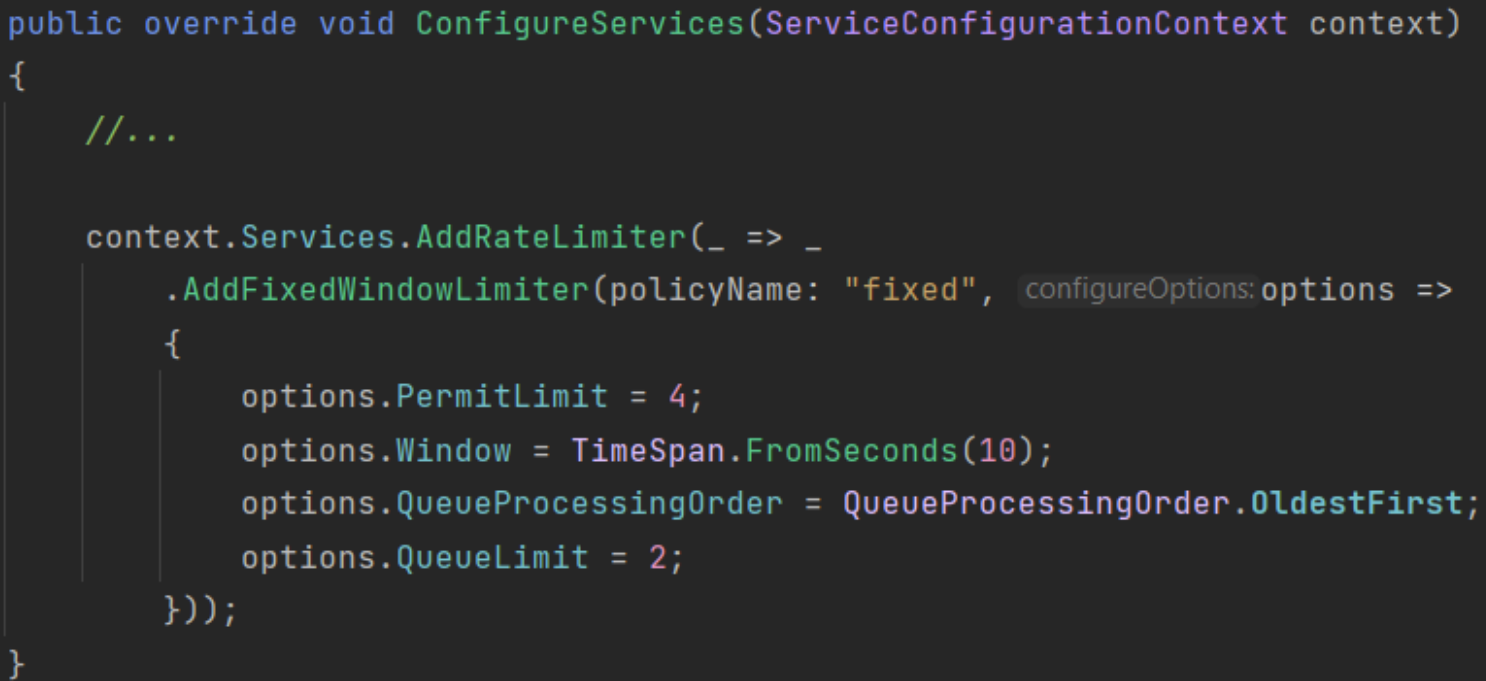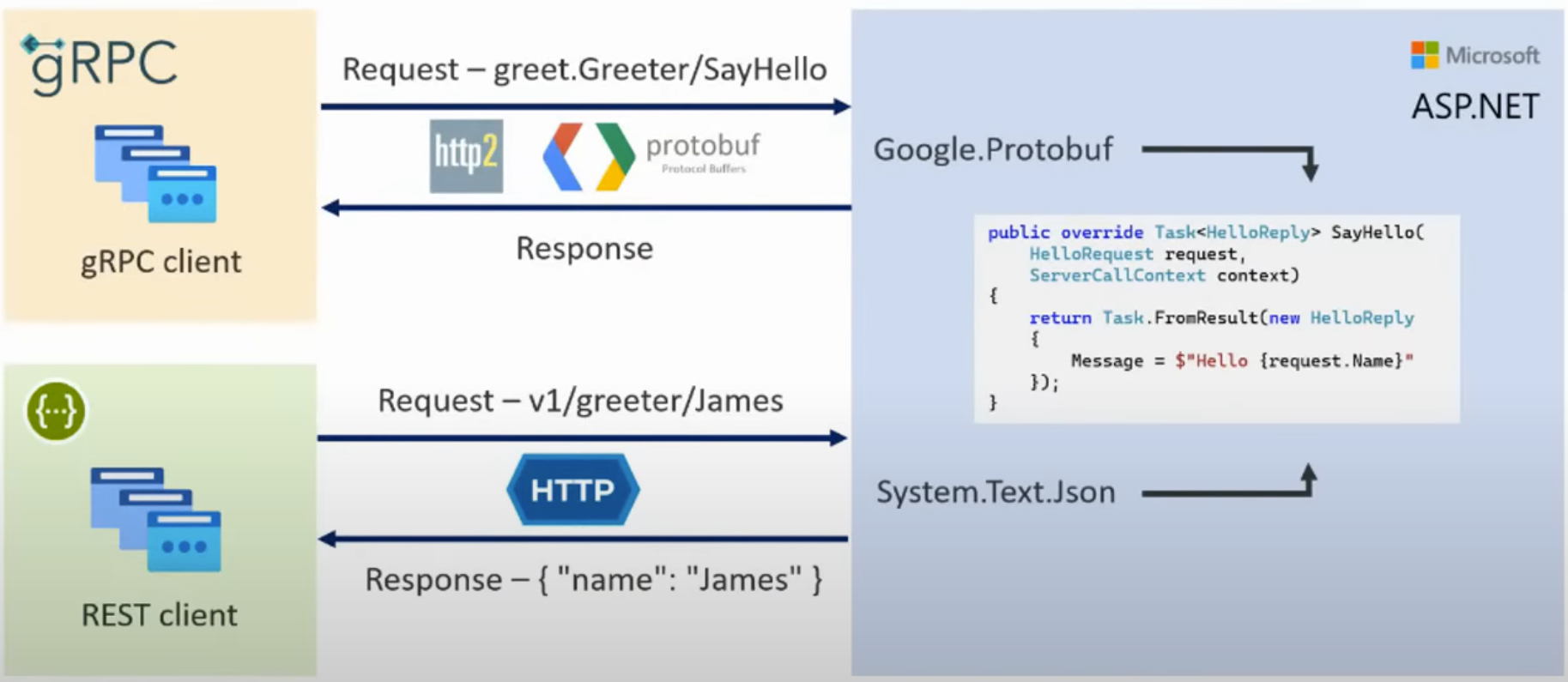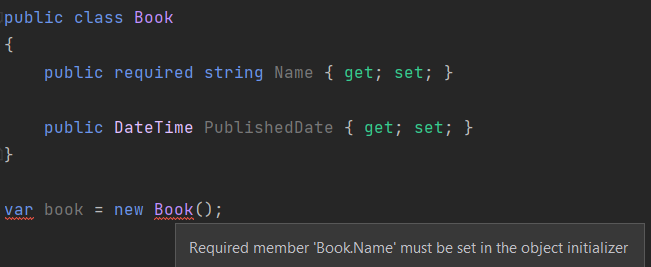What's new with .NET 7?
In this article, I will highlight a few interesting features that are now available with the release of C# 11 and .NET 7.
If you are considering using ABP 7.0, you should update your projects to .NET 7. There is a good community article you might want to check out 👉 "Upgrade Your Existing Projects to .NET7".
There are many new features coming with this release. We are going to examine new features within 4 sub-sections: ASP.NET Core, C#11, EF 7 and MAUI. Let's start with ASP.NET Core.
🛠 Liked this post? I now share all my content on Substack — real-world .NET, AI, and scalable software design.
👉 Subscribe here → engincanveske.substack.com
🎥 Also, check out my YouTube channel for hands-on demos and deep dives: https://www.youtube.com/@engincanv
ASP.NET Core
We will see the following features in this section:
- Rate Limiting
- Output Caching
- Built-in HTTP/3 Support
- gRPC - JSON Transcoding
- Blazor
- Custom Elements
- Improvements on JavaScript Interop for WASM
Rate Limiting
Rate limiting is a way to limit request frequency for a limited time. Before .NET 7 we didn’t have built-in support so we would need to implement it ourselves, use some NuGet packages around or let the CDN provider do this on server level on behalf of us (like Cloudflare).
With .NET 7, built-in Rate Limiting support has been added and we can easily define rate-limiting policies and attach them to our endpoints.
Defining rate-limiting policy and registering the required services to the DI container:

Adding the middleware to the request pipeline and using the defined policy:

Output Caching
Output Caching is a new middleware that provides a caching mechanism and allows you to store results from your web application and serve them from a cache rather than computing them every time. This improves performance and frees up resources for other tasks.
It’s pretty straightforward to use output caching in minimal APIs.
You just need to create an endpoint and use the CacheOutput method with an expiration time. Then when someone sends a request to your endpoint, it will be cached for a specified time and not calculate the result every time.
For the following example, the result will be the same for 10 minutes:
app.MapGet("/cached-output", () => $"Minute: {DateTime.Now.Minute}")
.CacheOutput(options =>
{
output.Expire(TimeSpan.FromMinutes(10));
});
Built-in HTTP/3 Support
In .NET 6, HTTP/3 was introduced for experimental purposes and now with .NET 7 it’s fully supported. But it's not enabled by default, it's understandable since it's still new and only %20 of the applications currently use it, on the other hand, HTTP/2 is used by almost every application.
To enable the HTTP/3 support, we need to configure it in our Program.cs file:
var builder = WebApplication.CreateBuilder(args);
builder.WebHost.ConfigureKestrel((context, options) =>
{
options.ListenAnyIP(5001, listenOptions =>
{
listenOptions.Protocols = HttpProtocols.Http1AndHttp2AndHttp3;
listenOptions.UseHttps();
});
});
gRPC - JSON Transcoding
gRPC is a high-performance RPC framework and uses HTTP/2 and Protobuf. Despite the benefits that gRPC brings, REST APIs have an important place in modern web applications.
gRPC - JSON Transcoding is an extension for ASP.NET Core that creates RESTful JSON APIs for gRPC services.

It's a really good feature and allows us to expose our gRPC services as REST APIs. It's worth checking out 👉 JSON Transcoding.
I've created a separate community article for this feature. Check it from here.
Blazor
We are going to cover two new features for Blazor:
- Custom Elements
- Improvements on JavaScript Interop for WASM
Custom Elements
Blazor Custom Elements provide a way to dynamically render Razor Components from other SPA frameworks/libraries such as Angular and React.
To be able to use custom elements, there are two steps that need to be done:
1-) Registering a Razor Component as a Custom Element:
builder.Services.AddServerSideBlazor(options =>
{
options.RootComponents.RegisterCustomElement<Counter>("my-counter");
});
2-) Using the Custom Element
<my-counter increment-amount={incrementAmount} />
Improvements on JavaScript Interop for WASM
JavaScript [JsImport] / [JsExport] interop API released with .NET 7.
- To import a JS function to call it from C# ->
[JsImport] - To export a .NET method so that it can be called from JavaScript ->
[JsExport]attributes should be used.
C# 11
There are great features that came with C# 11. In this article, we are going to only cover the following ones:
- Required Members
- Generic Attributes
- Raw String Literals
- List Patterns
Required Members
C# 11 introduces a new required keyword to allow us to ensure property initialization on object creation.
We just need to use the required keyword before the property type. That’s it. Then if we try to create an object without initializing the required properties, compile-time errors will be shown:

Generic Attributes
Generic Attributes are also one of the good features that came with C# 11. Before C#11, creating a typed attribute was cumbersome. We would need to pass a Type object as an argument to our constructor and assign it to a property in our attribute class and do stuff with this Type property.
With C#11, Generic Attributes are introduced. Now, it’s possible to easily create generic attributes like creating generic classes:
//defining a generic attribute
public class GenericAttribute<T> : Attribute { }
//using the attribute
[GenericAttribute<int>]
public int MyMethod() => default;
Raw String Literals
Raw String Literals is a great syntactic sugar that came with C#11. It allows containing of arbitrary text without escaping.
By wrapping a string with three double quotes (”””...”””), we are free to put any string value into variables:
var jsonContent = """
{
"name": ".NET 7",
"feature": "Raw String Literals"
}
""";
Also, we can use string interpolation with this new syntax. We just need to add a $ sign before the first triple quotes:

List Patterns
C# 11 introduces the “List Pattern”. It expands the pattern matching for lists and arrays. There are three different ways for list pattern matching:
1-) Discard Pattern
This pattern can be helpful to match one or more elements from a sequence if we know the length of the sequence.

2-) Range Pattern
If the length of the sequence is not known, then the range pattern may be useful. We can use this pattern to check the first or/and last element from a sequence.

3-) var Pattern
This pattern allows us to capture an element at that position and use the variable in our code.

Entity Framework Core 7
There are too many improvements and new features that were shipped with EF Core 7. Here's what we're going to cover in this article:
- JSON Columns
- Improvements on Bulk Updates & Deletes
- Performance Improvements on SaveChanges & SaveChangesAsync
JSON Columns
EF 7 supports JSON Columns and this allows the mapping of aggregates built from .NET types to JSON documents.
Thus, it's kind of combines relational databases and document-based databases in a way.
We can easily mark a column as a JSON column on the OnModelCreating method of our DbContext class:
protected override void OnModelCreating(ModelBuilder modelBuilder)
{
modelBuilder.Entity<Author>().OwnsOne(
author => author.Contact, ownedNavigationBuilder =>
{
ownedNavigationBuilder.ToJson();
ownedNavigationBuilder.OwnsOne(contactDetails => contactDetails.Address);
});
}
Also with this version, LINQ JSON query support has been announced. So, we can query over JSON Columns using LINQ as below:
var posts = await context.Posts
.AsNoTracking()
.Select(
post => new
{
post.Author!.Name,
post.Metadata!.Views,
Searches = post.Metadata.TopSearches,
Commits = post.Metadata.Updates
})
.ToListAsync();
Improvements on Bulk Updates & Deletes
EF 7 introduces the new ExecuteUpdateAsync and ExecuteDeleteAsync methods. By using these methods while making bulk updates or deletes, we can take out the change tracker in this process and this brings great performance gains.
Example:
await (await GetDbContextAsync()).Tags
.Where(tag => tag.Description.Contains("ABP"))
.ExecuteDeleteAsync();
Performance Improvements on SaveChanges & SaveChangesAsync
With EF 7, there are significant performance improvements on SaveChanges & SaveChangesAsync methods. According to the EF Core team, in some cases, saving changes is now four times faster than EF 6. You can see a simple benchmark result from the EF Core blog post here.

Even after inserting just four records, there is a significant performance gain.
.NET MAUI 7
As you know, .NET MAUI is a cross-platform framework for creating native mobile and desktop applications by using C# and XAML. By using the .NET MAUI, apps that can run on Android, IOS, macOS and Windows from a single-code base can be developed.
It’s a new technology, so it's evolving and the .NET MAUI team introduces good features with every release.
In this article, I will only mention a new feature called "Map Control" and some enhancements made with this release.
Map Control
.NET MAUI 7 introduces Map Control. This provides us a good native map experience.
It supports pins, polygons, circles, geolocations and much more...

Improvements on Mobile Rendering & Desktop Enhancements
.NET MAUI 7 came with optimized rendering for mobile applications and is much faster than .NET MAUI 6.
Also, there are some good enhancements on the desktop side:
- Window size and position,
- Context Menus (which there was a kind of bug and was not seen on some MAUI Controls for Windows applications),
- Tooltips,
- Gestures and more...
Conclusion
In this article, I've highlighted some features that were shipped with .NET 7.
I've added a references section down below, so you can check the references and see other features that came with this version.
Thanks for reading the article and I hope you find it helpful. See you in the next one!
🛠 Liked this post? I now share all my content on Substack — real-world .NET, AI, and scalable software design.
👉 Subscribe here → engincanveske.substack.com
🎥 Also, check out my YouTube channel for hands-on demos and deep dives: https://www.youtube.com/@engincanv
References
- https://devblogs.microsoft.com/dotnet/announcing-dotnet-7/
- https://devblogs.microsoft.com/dotnet/announcing-asp-net-core-in-dotnet-7
- https://devblogs.microsoft.com/dotnet/announcing-ef7
- https://devblogs.microsoft.com/dotnet/dotnet-maui-dotnet-7
- https://devblogs.microsoft.com/dotnet/welcome-to-csharp-11
- https://www.milanjovanovic.tech/blog/whats-new-in-dotnet-7


























































Comments
Berkan Şaşmaz 160 weeks ago
Great article!
Engincan Veske 160 weeks ago
Thanks :)